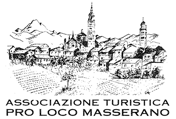Phone contacts
Follow us on our
social channels
Email address
Headquarters Address
The Distant Origins
The history of Masserano truly begins a long time ago. Archaeological finds, such as ancient scrapers, show that as early as 50,000 to 80,000 years ago, Neanderthal man passed through here. In Roman times, the area was an important crossroads, and the discoveries (coins, vases, tombs) bear witness to the existence of a flourishing village called Muro. When the barbarian invasions arrived, the inhabitants of Muro took refuge in the hills, giving rise to the Lower Borough, the first nucleus of Masserano.
A Village, Two Powers
In the Middle Ages, the town found itself divided between two powers: the free Municipality of Vercelli and the bishop-count. This dualism created tensions, but in the end, Masserano came entirely under the control of the Municipality of Vercelli. It was a period of growth: in 1340, the town obtained permission to open a weekly market, which transformed it into a crucial trading center for the whole area.
The Era of the Princes
The real turning point came with the Genoese family of the Fieschi, who in 1394 obtained control of Masserano. From then on, the fief became a principality, and for over two centuries, Masserano was the capital of a small independent state, with a mint that struck its own coins. Despite some clashes with the princes (accused of raising taxes and even minting counterfeit coins!), their era also saw important developments, such as the construction of the majestic Palace of the Princes.
From Monarchy to Change
In 1767, the principality was sold to the Savoy, ending its independence. Masserano then passed under French rule for a short period, but with the return of the Savoy, it once again became a quiet agricultural center. However, there were still prominent figures such as the jurist Giovanni Battista Cassinis, who became a minister and senator of the Kingdom of Italy. Between the end of the 19th and the beginning of the 20th century, the population grew considerably, triggering a wave of emigration that led many inhabitants to seek their fortune, first in Italy and Europe, then in America and Africa.
Masserano Today
The waves of migration continued until the post-World War II period, then slowed down. Today, the town's economy is based on work in nearby factories and commerce, particularly in the hamlet of San Giacomo, which since the 1970s has become an important commercial center. In this way, Masserano maintains its link between an ancient history and a present projected towards the future.
015/9571003
Via Roma 137, Masserano (BI)
Italy
Telephone contacts
Follow us on our channels
social
Email address
Headquarters Address
015/9571003
Via Roma 137, Masserano (BI)
Italy
